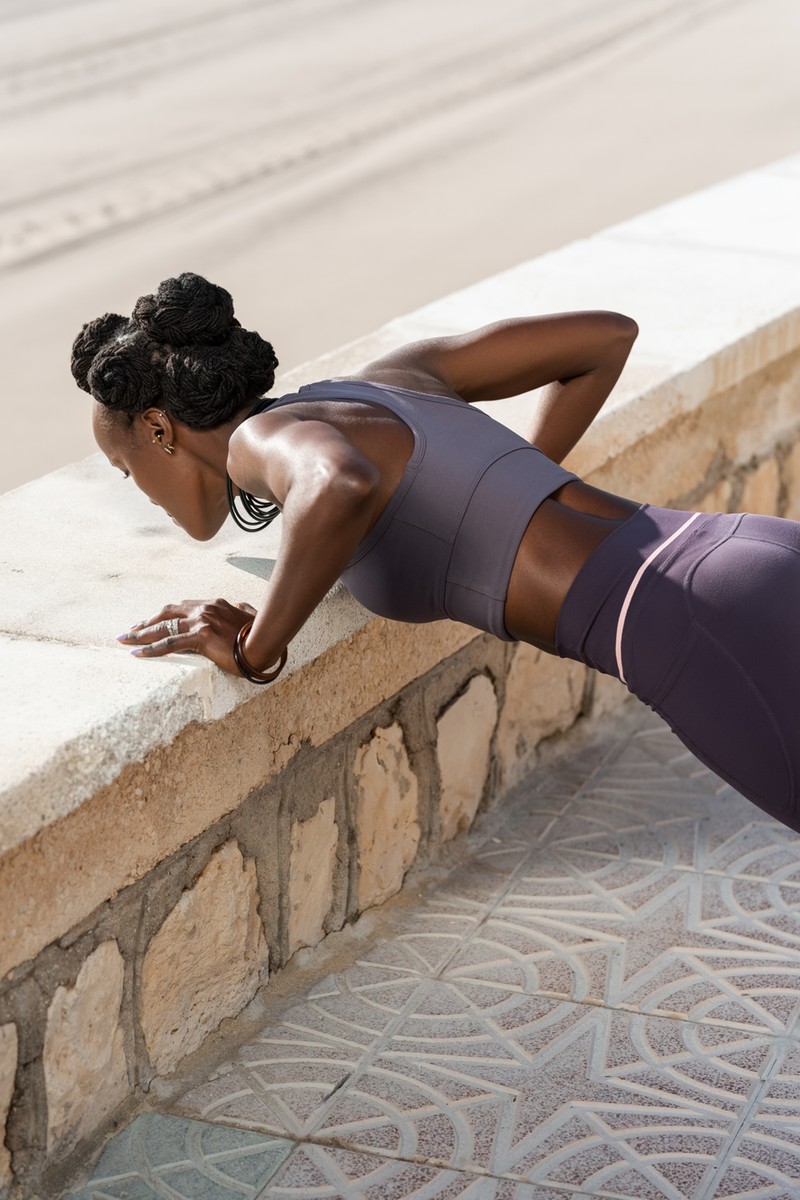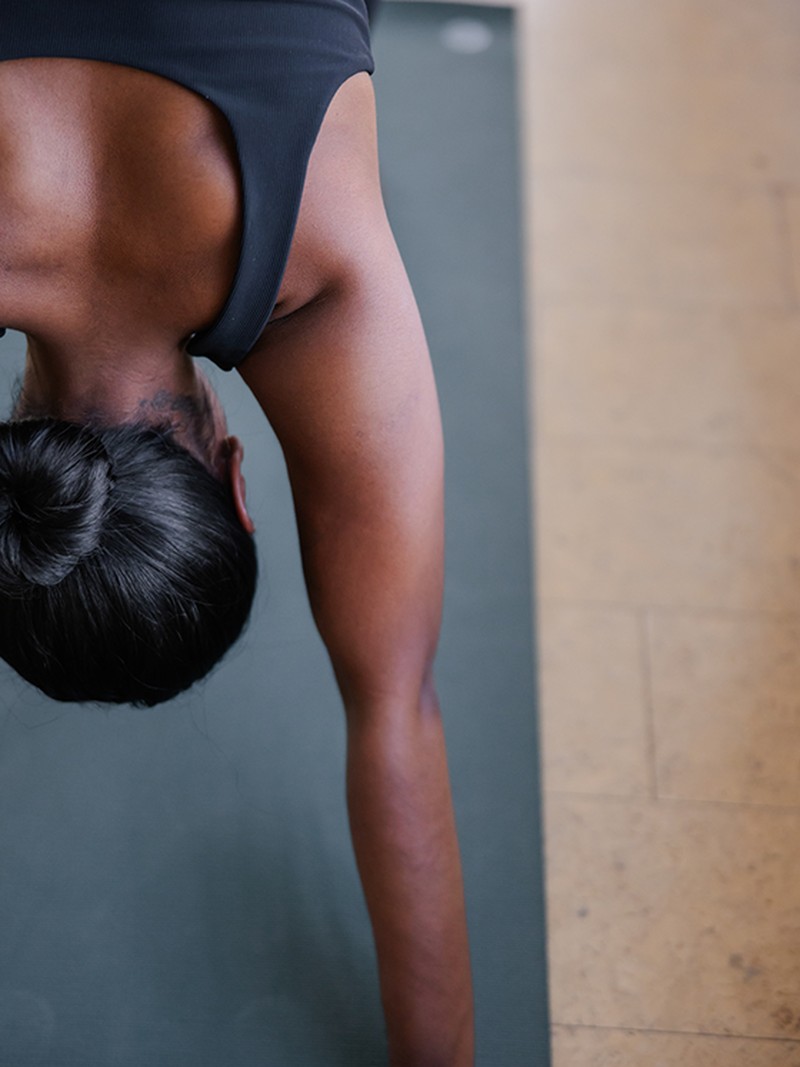How To Get More From A Bodyweight Workout
The Benefits
It Sculpts Lean Muscle
“The body can’t tell whether you’re using free weights – like dumbbells – or your own bodyweight. At the end of the day, it doesn’t matter what you use – it all builds strength. Plus, when you use your own bodyweight, you throw balance, mobility and stability into the mix, without the need for extra equipment. Knowing how to use your bodyweight effectively will give you the best results – it’s just about making the resistance high enough to kick the muscles into action.” – Mitch Raynsford, strength & conditioning coach at P3RFORM
It’s For Everyone
“Bodyweight training is a great way for beginners to ease their way into strength training. Learning the basic movement patterns and focusing on technique allows you to build the foundations for when you’re ready to start adding weights. But it’s also something that more advanced exercisers should still be incorporating to improve and maintain stability and mobility. Getting strong is great but getting injured through tight muscles and a lack of flexibility isn’t. Everyone benefits from bodyweight workouts.” – Sam McGowan, PT & founder of The Strong AF Club
It Builds A More Resilient Body
“If you want to strengthen, sculpt and build muscle, you may be under the impression that you need to hit the gym and lift heavy weights, but bodyweight-based exercises can be just as effective. Plus, they require a broader variety of movement, which challenges the body to work multiple muscle groups, offering a functional workout for a more resilient body. Bodyweight workouts can also help you help you build a stronger core while increasing overall flexibility – two key components of injury prevention.” – Sam
It’s Convenient
“A bodyweight workout can be done anytime, anywhere, meaning it’s always a winner from a convenience standpoint. All you need is your body and enough space to work out in.” – Sam
How To Maximise Your Workout
Go Slow
“The speed at which you perform an exercise completely changes the way it feels and adds significantly more tension to the muscles being worked. Slowing down the speed of an exercise is not only a great way to perfect your technique, but also makes it a hell of a lot harder. If you want to learn how to move properly, slow down. It’s not all about speed or how many reps you can fit in.” – Sam
Use Time Under Tension
“When you lift weights, you provide direct stimulus to the muscles – this causes tiny, micro tears in the muscle that kickstarts muscle growth. You can mimic this effect by slowing down a movement in its initial stages – this is known as ‘time under tension’. For example, if you’re going a squat, take at least five seconds to squat down and then drive back up. This is a simple yet effective way to make the muscle work harder, increasing the intensity – try it with pull-ups, press-ups and split squats, too.” – Aimee Victoria Long, PT
Try Back-to-Back Sets
“Many bodyweight exercises combine strength and cardio, meaning you can get an effective and efficient workout done in a shorter time. Take things to the next level with supersets – do bodyweight sets back-to-back without a rest.” – Aimee

Up The Reps
“Don’t be afraid to push yourself when doing a bodyweight workout – the body can take it. One of the most common pitfalls when doing a bodyweight workout is to not add in enough of a challenge to see results. To stimulate growth and strength, you need to push a muscle to near failure, so if weights already factor in your routine, eight body squats won’t cut it. Make sure you hit all muscle groups and push to near failure (the last rep or two should be a struggle).” – Mitch
Raise Your Heart Rate
“Adding plyometrics – exercises that involve a jumping or explosive movement – to a bodyweight session will raise your heart rate and add an element of cardio. Skipping, hopping, jump squats and jumping lunges are all great ways to produce both power and speed, and build a stronger body.” – Mitch
Play With Timings
“Adding weight to an exercise isn’t the only way to make your session more challenging. The first thing you can do is slow down the ‘tempo’ at which you perform each rep. For example, if you’re doing a squat and you simply go ‘up and down’ and it takes you two seconds to finish one rep, instead try going down for three seconds, pausing for one to two seconds at the bottom of the squat, and then taking three seconds to go back up. Try this for eight to ten reps and you’ll realise it’s a whole different ball game.” – Sam
Include Isometric Holds
“If you’ve ever done a plank, then you’ve done an isometric exercise. Simply put, an isometric exercise is any type of exercise that holds the body in one position – the muscles are contracted but don’t change length as you hold the position. For example, when you hold a plank, you’re contracting the muscles in your core, legs and upper body. Isometric exercises are a great way to mix things up and keep the body challenged.” – Darren Bruce, PT at Third Space
Get Creative With Circuits
“To add another dimension to your session, try PHA – peripheral heart action – training. Unlike with typical circuits, with PHA you focus on alternating parts of the body, swapping between upper and lower body exercises with no rest in between. Moving between ‘above and below the waist’ with strength-based moves means blood is constantly flowing to different parts of the body without a break. The result? It keeps your heart at a steady and elevated state throughout your workout for a hit of cardio. Try a circuit of six different exercises, alternating between upper and lower body, with little or no rest in between for four to five rounds. Rest for one minute between each round.” – Darren
Get Elevated
“Playing with elevation will challenge your muscles. For example, in a lunge, elevate your front or back foot on a step to immediately give you more depth to work with. Push-ups, meanwhile, can be made harder by elevating your feet on a sofa or step – this challenges the body as you are pressing more of your bodyweight as the centre of gravity has shifted.” – Tammy Sapir, trainer at F45 Mill Hill
Stick With It
“To see progress, you need to hit muscle groups at least twice a week – this will ensure you’re giving the body enough stimulus to trigger muscle growth. Aim for two full-body sessions a week, and as you start to plateau, increase the reps or sets until you plateau again. At this stage, add in a third session or choose more challenging exercises.” – Mitch
For more information or to book a session with one of the experts, visit P3RFORM.co.uk, AimeeVictoriaLong.co.uk, ThirdSpace.London & F45Training.co.uk/MillHill. You can find Sam on Instagram: @SamSays_PT & @TheStrongAFClub.
DISCLAIMER: Features published by SheerLuxe are not intended to treat, diagnose, cure or prevent any disease. Always seek the advice of your GP or another qualified healthcare provider for any questions you have regarding a medical condition, and before undertaking any diet, exercise or other health-related programme.
DISCLAIMER: We endeavour to always credit the correct original source of every image we use. If you think a credit may be incorrect, please contact us at info@sheerluxe.com.


